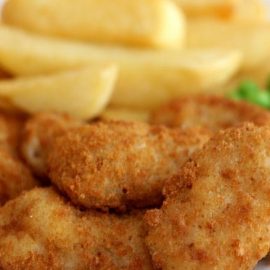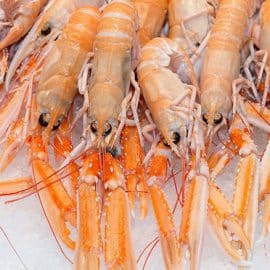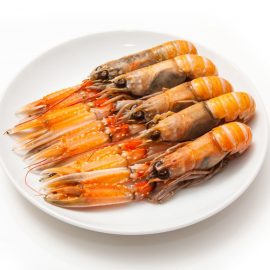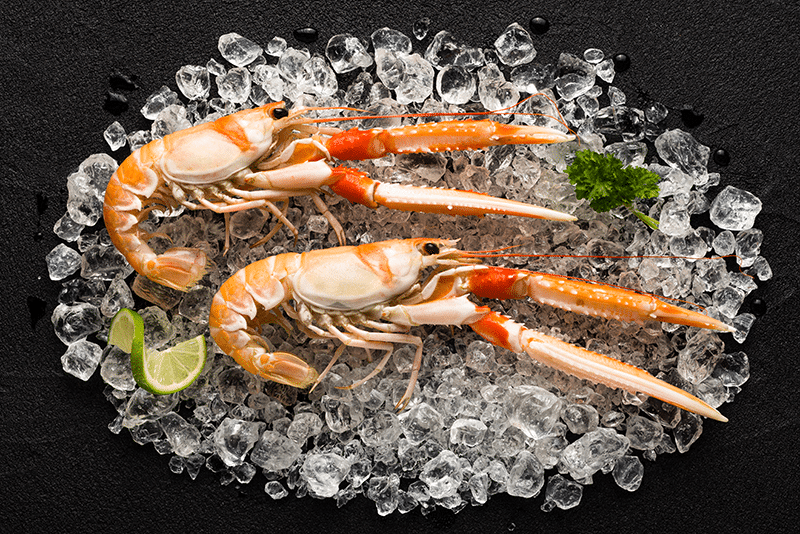
Some Scampi Facts
In Europe, the word scampi originated in Italy. A scampi is usually a peeled tail of a prawn, however, it is the meat of a specific species, the langoustine.
Langoustines are small lobsters that inhabit cold water in the North Sea. Also called Dublin Bay Prawn, Whitby scampi, and Norway lobster, which is known scientifically as Nephrops norvegius. Quite a bit of our langoustine is shipped to Europe, where it is highly sought after for its wholeness, with its shell intact. The majority of langoustines, however, become scampi. As a result of its popularity, scampi is more expensive than langoustines, despite langoustines having a higher abundance.
It’s no wonder that shrimp scampi can be found in a variety of price ranges. Scampi are usually coated in breadcrumbs, which double or even triple their weight, allowing pub menus across the country to offer real scampi at affordable prices.
The size of Scampi/Dublin Bay Prawns varies. The largest langoustines are not used to make scampi but in posh European restaurants and our Langoustines line. The smaller scampi are what goes into breaded and battered scampi. Basically, there are two classes produced from these:
- Wholetail scampi – This type of scampi comes with 2-3 tails inside its coating.
- Formed scampi – made of scampi pieces that have been broken apart.
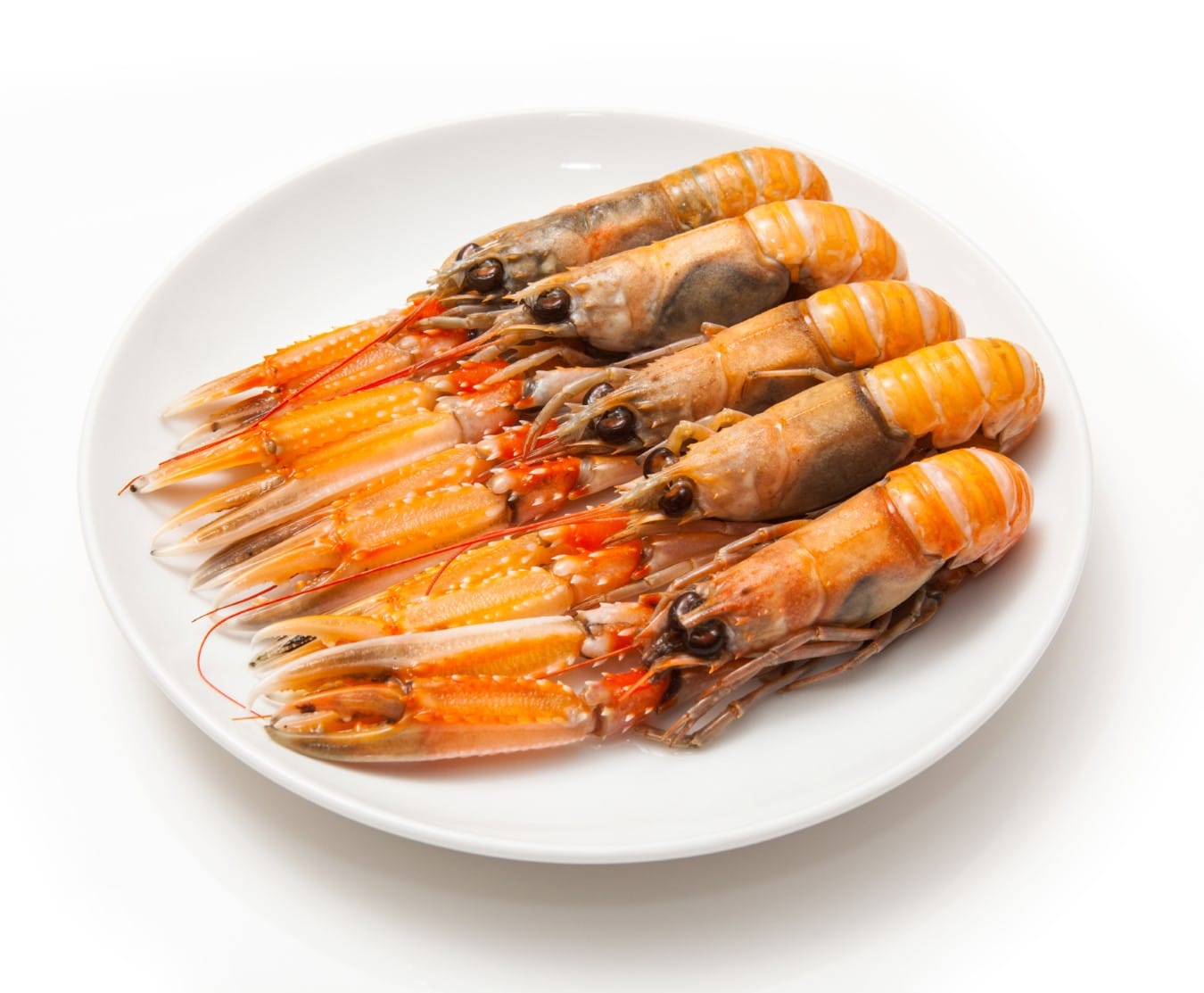
A Selection of Our Scamp
Our scampi range has been sourced from all over the UK, to the delight of our customers. The top product is a large whole scampi without any coating or water added. UK consumers can only find top-quality scampi at our store.
We work with another family-owned business that produces battered scampi for us. Using 70% scampi without added water glazed in a light batter, they create a delicious dish that is baked to perfection.
A Sustainable Future
UK fishermen land about 30,000 tonnes of langoustine a year, mostly in Scotland. Led by Ireland, half a dozen other EU countries plus Iceland land about the same between them. The UK catch is down from about 40,000 tonnes 10 to 12 years ago although the decline has stabilised since 2013. A regime of quotas and minimum landing sizes protects stocks and most fishing areas are considered well managed.
This all goes to ensure that our Scampi is taken from sustainable fisheries by the conservation and management measures as led out in the European common fisheries policy.
- All product is supplied with certified catch certificates
- All product is landed at approved UK and Irish ports with fisheries officers on site. This ensures all fish is logged within quotas.
- We only use Hand Peeled Scampi Tails
- BRC Accredited Factory
- Scampi purchased from local ports supporting local fishermen and the local industry and economy
Sustainable alternatives
- Abalone
- Blue mussel
- Brown crab
- Chilean mussel
- European lobster
- King prawn
- King scallop
- Manila clam
- Native oyster
- Pacific oyster
- Slipper limpet
- Tiger prawns
Breaded Wholetail Scampi
Ingredients:
- Scampi tails with added water (40%),
- Breadcrumbs
- Salt, yeast
- Batter
- Rapeseed oil
The best results are achieved by cooking from frozen.
For approximately 3-4 minutes, deep fry in hot oil at 180 degrees Celsius/350 degrees Fahrenheit.
The other option is to bake them in an oven preheated to 230 degrees Celsius for about 15-18 minutes.
Alternatively, you can grill the meat for 12–15 minutes under a preheated grill.
The core temperature of cooked breaded scampi should reach 72 degrees Celsius.
